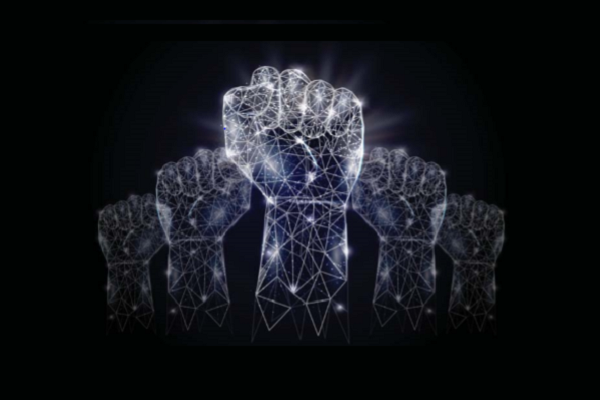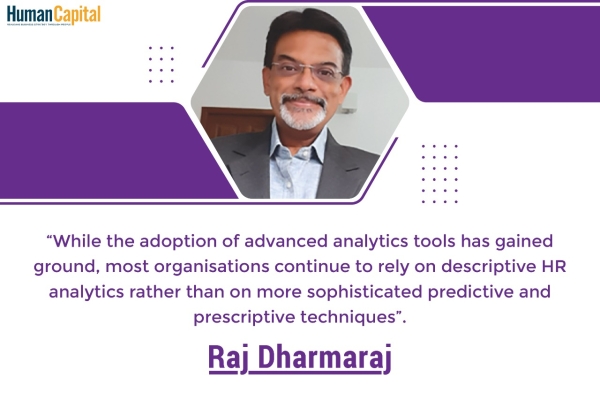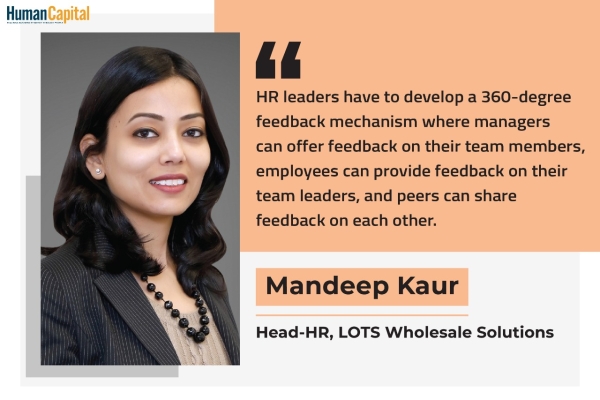Performance Management System (PMS) links closely with employee engagement, employee morale, and hence attrition levels. Organisations today are starving for great leaders rather than pure managers and building robust PMS at early stage.
Today, it is hard to believe that most organisations, until a decade ago, utilised a performance management system that offered no help to employees in improving their performance or contribute to better corporate performance. Baby Boomers and Gen X will recall how the annual appraisal seasons were relegated as periods of frustration, resentment, and disenchantment among employees. The attention of the entire organisation would remain focused on an exercise that decided the performance ratings and the annual increments basis the ratings. However, performance management systems (PMS) since then have undergone a revolution. The traditional year-end PMS is now a thing of the past in most progressive organisations.
The tyranny of the bell curve
Until the late 90s, managers in most companies were forced to follow the Bell curve, wherein they could classify only 10-15 percent of the employees as top performers. Another 10-15 percent would fall in the mediocre-poor bucket. The 60-70 percent majority had to be put in the average bracket. It was a fair assumption in the Bell curve model that outstanding performance, as well as poor performance, are exceptions to the rule. The majority are average. The method professed to reward the top performers and encourage average performers to work harder and get into the top slot. The weak performers could be counselled and trained to help them climb the performance ladder. In short, the system forced managers to classify some top performers as average, which was unfair. It led to frustration and resentment, not only among employees, but also among the managers rating their staff.
Employee Engagement and PMS
Research has established that the traditional year-on-year appraisal system had little impact on how employees did their jobs. It did not add value or lead to better performance. More importantly, in a recent survey, more than 48% of the employees admitted that they are unhappy with a traditional approach to performance management. The old system hurt employee engagement and morale. In many companies, employee attrition peaked around March-April, coinciding with the annual reviews.
Organisations where the performance management systems were upgraded as per the needs of the business and objectives have seen a drop in exits. When you review performance and appraise employees at the end of a year, you leave the employee with very little time to make corrections as the year has already passed.
Over the years, organisations have moved from command and control to flatter and less hierarchical models since it was inevitable for the performance management methodology to change with the times.
The feedback mechanism gives power in the hands of the employees, who now have a say in managing their agenda as well as that of the company. The new system gives multiple opportunities to employees to improve for the better. The evolved system is much more than a performance evaluation mechanism. It doubles up as an employee engagement tool that drives better results for the organisation. The feedback conversations can also facilitate employee recognition and coaching.
The Gen Sync
While it would be incorrect to say that millennials and Gen Z led to change in PMS, it is truly evident that the new approach is more in sync with these generations. It is no fluke that the fading away of the traditional performance management system coincided with the rise of millennials and Gen Z in the workforce. The "on the go feedback" model became the need of the hour in a highly autonomous and fast-paced environment. The bell curve methodology finds it difficult to survive in the new era where you have 4-5 generations working at a typical workplace.
The digitally-savvy, always-online generation, looking more for coaching than feedback differs from the older generation on how organisations and bosses should conduct themselves. They have less patience and higher expectations compared to the older generations. They do not care much for concepts like stability and loyalty, and are willing to take risks to take up new challenges and positions. One year is too long a period for them to be told how they are doing and is therefore more regressive than progressive.
The Coaching Mindset and PDP's
The coaching mentality in the last five years has done more good to a PMS environment than anything else. The coaching mindset is based on the assumption that individuals tend to buy into decisions a lot more if it comes from them, rather than being told what to do. A coaching environment is highly enabling, and the manager does a course correction and acts as a sounding board than giving pure instructions of what needs to be done.
In this typical conversation areas are identified that inhibits an individual from being more successful in the role, and a clear plan of action is established as to how to work on those areas. This may require the help of internal or external training to upgrade one's skill set or a behavioural change through guided steps to overcome an issue. A Performance Development Plan (PDP) is formulated with a clear focus on target achievement as well as the holistic growth of an individual.
Periodic reviews help course correction
The new system of continuous feedback does away with the bell curve and forced segmentation. Feedback sessions held three or four times in a year have replaced the year-end review. The employee chooses the timing of the meetings. Goals, key deliverables, and comments are put into the system periodically, allowing time for revision and course correction. The new system does a good job of expectation management with quantifiable KPIs and periodic reviews. Employees know how they are faring, where they are doing well, and where they need to improve. It helps the employees to make course corrections and define new goals.
The shift from subjective to quantifiable results
Modern evaluation systems have moved from subjective goals of the past to smart quantifiable goals. Many parameters in traditional KPIs were non-quantifiable and open to subjective interpretations. Different perceptions could lead to differences of opinion among managers and employees. In areas like Sales, it is easy to quantify goals. But in support functions like HR, Finance, and Legal, targets would be ambiguous. Not anymore. E.g., in HR, how do you measure the objective of higher levels of engagement? It cannot be dependent solely on the subjectivity of the manager if he thinks they went up or not. One way could be a satisfaction survey which shows 70% score. The objective could be to take it to 80%. Establishing clear metrics helps define and measure success in that role.
Rising acceptance of 360 degrees in India
The number of companies carrying out a 360 degree feedback has almost doubled in the last five years. 360 degrees, as the name suggests, involves getting feedback on a leader's performance and work-related behaviour from a large group of peers in the organisation, in addition to the boss. It is usually done once every two years for leaders. It cannot be deployed widely across the organisation, as this requires a certain level of maturity to take feedback, especially from individuals reporting to you. The feedback involves a mix of objective and subjective questions. Among other things, it assesses a leader's networking ability, commercial acumen, and his or her ability to inspire and infuse energy. It also requires the reviewer to list three things the leader should start doing, continue doing, and stop doing. A scientific process handled by a third party, 360 degree feedback comes from a critical mass of 12 to 15 people that includes direct reports, managers, and colleagues. The process assures anonymity, which ensures the authenticity of the process. Because of the large size of people giving feedback, it is not possible to figure out who said what.
Upward feedback empowers employees
Upward feedback is a popular method of getting feedback for middle management positions. The questions are not as in-depth as in 360 degree feedback, but it still works as a fair assessment of the effectiveness of leadership, and helps find out if managers are walking the talk on the company's values and culture. It can be done more frequently, and is, therefore, more effective. Anonymity is also assured. It makes the employees feel empowered, giving them a say in the ecosystem. It also ensures that the feedback is two-way. It can also be deployed widely, unlike 360 degrees feedback.
Role of Technology
Thanks to technology, today's online feedback formats are targeted, smarter, easy to fill, and less time-consuming. Employees are a lot more engaged with the new formats. At the same time, the reason owing to which many organisations are not moving from traditional PMS to the newer version is owing to the reluctance and the cost involved in shifting the IT systems. Sooner or later, these organisations realise that the cost is not comparable to what an organisation stands to lose in the face of an archaic PMS and lower employee engagement and morale. On the other hand, some organisations have invested heavily in embracing the gamification/ 'appification' route, which drives employees to fill their metrics on time by showing real time completion status at the manager level.
While it would be incorrect to say that millennials and Gen Z led to change in PMS, it is truly evident that the new approach is more in sync with these generations
Today's ratings are refined, rational, and credible
The transition from traditional to new age performance management practices is rooted in science, and since they are rational, objective, and credible, they have led to employee acceptance. The ABC ratings of yesteryears have been replaced with ratings that are not aimed to belittle employees. Another trend, also rooted in science, is the rising importance of business-critical behaviours. Behaviours have become critical components of new appraisals. Executives are judged on qualities like adaptability, camaraderie, and resilience. When it comes to the manager, additional qualities like accessibility and inspirational leadership are added. The performance score is an aggregate of all behaviours. This is a more scientific way of judging, and employees can understand and appreciate the ratings better.
New age companies have made the same transition and now arrive at the overall rating/score through a brokendown step-based approach where the employee rates himself on different parameters, and the manager's ratings are later revealed to enable a discussion in terms of reality vs expectations. Since ratings are for a particular behaviour, it provides the employee with an equal chance to confine the discussion to a particular behaviour than a manager pointing out his general opinion on performance. If the ratings match, the employee and manager are on the same page, and the PMS exercise becomes more of a reassurance than opening a box of surprises. This reduces the anxiety around the appraisal period as engagement and communication has been built all year long.
The way forward
There is ample evidence to suggest that PMS systems embedded in higher frequency, a coaching mindset, and collaborative approach are here to stay. However, with the number of organisations adopting this approach, it is becoming more of a hygiene factor. Clearly, PMS links closely with employee engagement, employee morale, and hence attrition levels. Organisations today are starving for great leaders rather than pure managers and building robust PMS at early stage. They are also course correcting employees from the very beginning with these efficient metrics to improve the general workforce and the leading barometer of an organisation.
.png)
Has COVID-19 forever changed the way we live and work?
Trending
-
SBI General Insurance Launches Digital Health Campaign
-
CredR Rolls Out 'Life Happens' Leave For Its Employees
-
Meesho Announces 30-Week Gender-Neutral Parental Leave Policy
-
Microsoft Unveils Tech Resilience Curriculum To Foster An Inclusive Future
-
60% Indian Professionals Looking For Job Change Due To COVID: Survey
-
SpringPeople And Siemens Collaborate For Digital Transformation Push
-
86% Professionals Believe Hybrid Work Is Essential For Work Life Balance: Report
-
Almost 1 In Every 3 People's Personal Life Affected Due To Work Stress
-
Meesho Rolls Out Reset And Recharge Policy For Employees
-
80% Of Talent Leaders & Academics Say Pandemic Changed Skill Needs For Youth: Report
-
Hero Electric Rolls Out 'Hero Care' Program For Employees
-
Human Capital In Collaboration With ASSOCHAM Hosts Virtual Conference
-
IKEA India, Tata STRIVE Collaborate To Create Employability And Entrepreneurship Opportunities
-
SAP India, Microsoft Launch Tech Skilling Program for Young Women
-
DXC Technology, NASSCOM Collaborate For Employability Skills Program
-
Lenskart To Hire Over 2000 Employees Across India By 2022
-
Mindtree Launches Learn-and-Earn Program
-
Tata AIA Extends 'Raksha Ka Teeka' To Its Employees
-
Swadesh Behera Is The New CPO Of Titan
-
NetConnect Global Plans To Recruit 5000 Tech Professionals In India
-
Hubhopper Plans To Hire 60% Of Indian Podcasters By 2022
-
Corporate India Needs More Women In Leadership Roles: Report
-
Aon to Invest $30 Million and Create 10,000 Apprenticeships by 2030
-
Tech Mahindra Launches ‘Gift a Career’ Initiative for Upskilling of Youth
-
40% Women Prefer Flexible Working Options in Post-COVID World: Survey
-
3 out of 4 companies believe they can effectively hire employees virtually: Report
-
Vodafone , CGI and NASSCOM Foundation launch digital skills platform
-
Odisha: Bank, postal employees to deliver cash for elderly, differently-abled persons
-
Skill India launches AI-based digital platform for "Skilled Workforce"
-
Hiring activity declines 6.73% in first quarter: Survey
-
70% startups impacted by COVID-19 pandemic
-
Bajaj Allianz Life ropes in Santanu Banerjee as CHRO
-
Over 70 Percent MSMEs look at cutting jobs to sustain businesses
-
93 Per Cent employees stressed about returning to office post-lockdown
-
Johnson & Johnson India announces family benefits for same gender partners
-
Indian firms turning friendly towards working mothers
-
Welspun India names Rajendra Mehta as new CHRO
-
Wipro partners with NASSCOM to launch Future Skills platform



Human Capital is niche media organisation for HR and Corporate. Our aim is to create an outstanding user experience for all our clients, readers, employers and employees through inspiring, industry-leading content pieces in the form of case studies, analysis, expert reports, authored articles and blogs. We cover topics such as talent acquisition, learning and development, diversity and inclusion, leadership, compensation, recruitment and many more.
Subscribe Now












































Comment